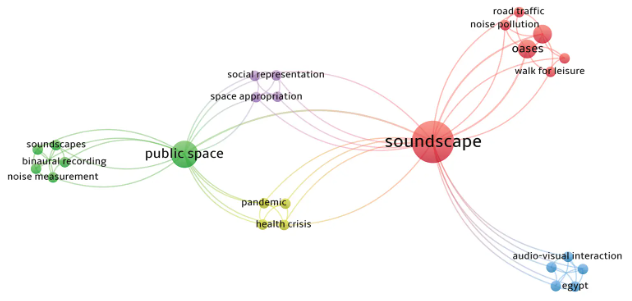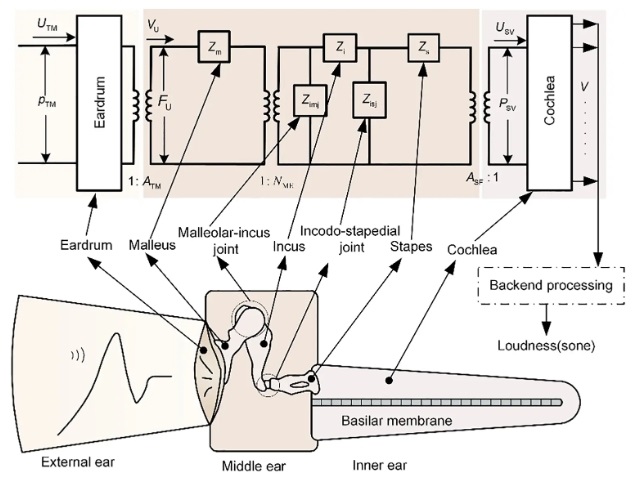The three-dimensional aircraft-runway coupled vibration response based on double-layer plate for semi-rigid base
Abstract
As global aviation expands, airport infrastructure faces growing pressure to accommodate larger and heavier aircraft. A key challenge is managing the vibration interaction between aircraft and runway during takeoff, taxiing, and landing, which affects runway durability and aircraft safety. While most research focuses on the surface layer, the role of the semi-rigid base, commonly used in China, is often overlooked. This study addresses this by analyzing the semi-rigid base’s role in three-dimensional aircraft-runway coupled vibrations. Taking into account the semi-rigid base layer and the subgrade shear stiffness, the study establishes a three-dimensional aircraft-pavement coupled model, using the measured roughness data from Shanghai Pudong International Airport as model input. The new explicit integration method is employed to solve the model. The study examines how structural parameters influence dynamic responses like load factors, strain, and displacement. Numerical simulations reveal that the support function of the semi-rigid base and the shear stiffness of the subgrade play a crucial role in improving runway stiffness and performance. The impact of aircraft taxiing speed is also significant. Specifically, increasing the base layer modulus from 1.50 GPa to 2.50 GPa results in a significant strain reduction (from 16.5 με to 12.8 με), and increasing the base thickness reduces strain by up to 17.8%. Moreover, enhancing the subgrade shear stiffness leads to improved resistance to deformation, further reducing strain and displacement. Additionally, as taxiing speed increases, the mean dynamic load coefficient decreases due to the lift generated by the aircraft, while strain fluctuations in the pavement increase. However, changes in pavement structure have minimal impact on aircraft center-of-gravity acceleration. This research provides critical insights for optimizing aircraft and runway design, enhancing safety, and extending runway lifespan through a coordinated focus on the surface layer, semi-rigid base layer, and subgrade with shear stiffness.
References
[1]Hu G, Li P, Xia H, et al. Study of the Dynamic Response of a Rigid Runway with Different Void States during Aircraft Taxiing. Applied Sciences. 2022; 12(15): 7465. doi: 10.3390/app12157465
[2]Hou T, Liu S, Ling J, et al. Vibration Response Law of Aircraft Taxiing under Random Roughness Excitation. Applied Sciences. 2023; 13(13): 7386. doi: 10.3390/app13137386
[3]Nita P. Dynamic interaction of military aircraft working on a cement concrete airfield pavement. Transportation Overview - Przegląd Komunikacyjny. 2020; 2020(2): 37-45.
[4]Liu C, Chong X, Wang L, et al. Numerical Analysis on the Mechanical Properties of the Concrete Precast Pavement of Runways under the Wheel Load. Applied Sciences. 2022; 12(19): 9826. doi: 10.3390/app12199826
[5]Liu S, Ling J, Tian Y, et al. Random Vibration Analysis of a Coupled Aircraft/Runway Modeled System for Runway Evaluation. Sustainability. 2022; 14(5): 2815. doi: 10.3390/su14052815
[6]Li S, Guo J. Modeling and Dynamic Analysis of an Aircraft–Pavement Coupled System. Journal of Vibration Engineering & Technologies. 2022; 11(7): 3507-3519. doi: 10.1007/s42417-022-00764-w
[7]Chen HY, Ding H, Chen LQ. Coupling Vibration of a Moving Oscillator with a Sandwich Plate on Nonlinear Foundations. Journal of Vibration Engineering & Technologies. 2024. doi: 10.1007/s42417-024-01315-1
[8]Liu S, Tian Y, Yang G, et al. Effect of space for runway roughness evaluation. International Journal of Pavement Engineering. 2022; 24(2). doi: 10.1080/10298436.2022.2141739
[9]Sawant V. Dynamic analysis of rigid pavement with vehicle–pavement interaction. International Journal of Pavement Engineering. 2009; 10(1): 63-72. doi: 10.1080/10298430802342716
[10]Kim SM, Won MC, McCullough BF. Airport pavement response under moving dynamic aircraft loads. In Designing, Constructing, Maintaining, and Financing Today’s Airport Projects. 2002; 1-10.
[11]Patil VA, Sawant VA, Deb K. 2-D finite element analysis of rigid pavement considering dynamic vehicle–pavement interaction effects. Applied Mathematical Modelling. 2013; 37(3): 1282-1294. doi: 10.1016/j.apm.2012.03.034
[12]Yang S, Li S, Lu Y. Investigation on dynamical interaction between a heavy vehicle and road pavement. Vehicle System Dynamics. 2010; 48(8): 923-944. doi: 10.1080/00423110903243166
[13]Belabed Z, Tounsi A, Bousahla AA, et al. Accurate free and forced vibration behavior prediction of functionally graded sandwich beams with variable cross-section: A finite element assessment. Mechanics Based Design of Structures and Machines. 2024: 1-34. doi: 10.1080/15397734.2024.2337914
[14]Belabed Z, Tounsi A, Bousahla AA, et al. Free vibration analysis of Bi-Directional Functionally Graded Beams using a simple and efficient finite element model. Structural Engineering and Mechanics, 2024; 90(3): 233-252.
[15]Attia A, Berrabah AT, Bourada F, et al. Free Vibration Analysis of Thick Laminated Composite Shells Using Analytical and Finite Element Method. Journal of Vibration Engineering & Technologies. 2024. doi: 10.1007/s42417-024-01322-2
[16]Lakhdar Z, Chorfi SM, Belalia SA, et al. Free vibration and bending analysis of porous bi-directional FGM sandwich shell using a TSDT p-version finite element method. Acta Mechanica. 2024; 235(6): 3657-3686. doi: 10.1007/s00707-024-03909-y
[17]Hu W, Xu M, Zhang F, et al. Dynamic analysis on flexible hub-beam with step-variable cross-section. Mechanical Systems and Signal Processing. 2022; 180: 109423. doi: 10.1016/j.ymssp.2022.109423
[18]Hu W, Xi X, Song Z, et al. Coupling dynamic behaviors of axially moving cracked cantilevered beam subjected to transverse harmonic load. Mechanical Systems and Signal Processing. 2023; 204: 110757. doi: 10.1016/j.ymssp.2023.110757
[19]Hu W, Zhou Y, Liu Q, et al. Vibrational analysis of finite plate on elastic foundation subjected to oblique impact. Journal of Mechanics of Materials and Structures. 2024; 19(3): 419-433. doi: 10.2140/jomms.2024.19.419
[20]Liu S, Ling J, Tian Y, et al. Assessment of aircraft landing gear cumulative stroke to develop a new runway roughness evaluation index. International Journal of Pavement Engineering. 2021; 23(10): 3609-3620. doi: 10.1080/10298436.2021.1910823
Copyright (c) 2024 Shifu Liu, Jianming Ling, Weiyu Mao, Tianxin Hou

This work is licensed under a Creative Commons Attribution 4.0 International License.









